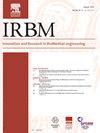The R-Vessel-X Project
IF 4.2
4区 医学
Q1 ENGINEERING, BIOMEDICAL
引用次数: 0
Abstract
1) Objectives: This technical report presents a synthetic summary and the principal outcomes of the project R-Vessel-X (“Robust vascular network extraction and understanding within hepatic biomedical images”) funded by the French Agence Nationale de la Recherche, and developed between 2019 and 2023. 2) Material and methods: We used datasets and tools publicly available such as IRCAD, Bullitt or VascuSynth to obtain real or synthetic angiographic images. The main contributions lie in the field of 3D angiographic image analysis: filtering, segmentation, modeling and simulation, with a specific focus on the liver. 3) Results: We paid a particular attention to open-source software diffusion of the developed methods, by means of 3D Slicer plugins for the liver anatomy segmentation (SlicerRVXLiverSegmentation) and vesselness filtering (SlicerRVXVesselnessFilters), and an online demo for the generation of synthetic and realistic vessels in 2D and 3D (OpenCCO). 4) Conclusion: The R-Vessel-X project provided extensive research outcomes, covering various topics related to 3D angiographic image analysis, such as filtering, segmentation, modeling and simulation. We also developed open-source and free softwares so that the research communities in biomedical engineering can use these results in their future research.
R-Vessel-X项目
1)目的:本技术报告介绍了R-Vessel-X项目(“肝脏生物医学图像中的稳健血管网络提取和理解”)的综合总结和主要成果,该项目由法国国家研究机构资助,在2019年至2023年之间开发。2)材料和方法:我们使用公开的数据集和工具,如IRCAD, Bullitt或VascuSynth来获得真实或合成的血管造影图像。主要贡献在于三维血管造影图像分析领域:滤波,分割,建模和仿真,特别关注肝脏。3)结果:我们特别关注所开发方法的开源软件传播,通过肝脏解剖分割(SlicerRVXLiverSegmentation)和血管滤波(SlicerRVXVesselnessFilters)的3D切片器插件,以及生成二维和三维合成和逼真血管的在线演示(OpenCCO)。4)结论:R-Vessel-X项目提供了广泛的研究成果,涵盖了与3D血管造影图像分析相关的各种主题,如滤波、分割、建模和仿真。我们还开发了开源和免费软件,以便生物医学工程的研究团体可以在他们未来的研究中使用这些结果。
本文章由计算机程序翻译,如有差异,请以英文原文为准。
求助全文
约1分钟内获得全文
求助全文
来源期刊

Irbm
ENGINEERING, BIOMEDICAL-
CiteScore
10.30
自引率
4.20%
发文量
81
审稿时长
57 days
期刊介绍:
IRBM is the journal of the AGBM (Alliance for engineering in Biology an Medicine / Alliance pour le génie biologique et médical) and the SFGBM (BioMedical Engineering French Society / Société française de génie biologique médical) and the AFIB (French Association of Biomedical Engineers / Association française des ingénieurs biomédicaux).
As a vehicle of information and knowledge in the field of biomedical technologies, IRBM is devoted to fundamental as well as clinical research. Biomedical engineering and use of new technologies are the cornerstones of IRBM, providing authors and users with the latest information. Its six issues per year propose reviews (state-of-the-art and current knowledge), original articles directed at fundamental research and articles focusing on biomedical engineering. All articles are submitted to peer reviewers acting as guarantors for IRBM''s scientific and medical content. The field covered by IRBM includes all the discipline of Biomedical engineering. Thereby, the type of papers published include those that cover the technological and methodological development in:
-Physiological and Biological Signal processing (EEG, MEG, ECG…)-
Medical Image processing-
Biomechanics-
Biomaterials-
Medical Physics-
Biophysics-
Physiological and Biological Sensors-
Information technologies in healthcare-
Disability research-
Computational physiology-
…
 求助内容:
求助内容: 应助结果提醒方式:
应助结果提醒方式:


